#Passover Recipes
Explore tagged Tumblr posts
Text

These vegetable croquettes are filled with veggie goodness and lush mashed potatoes, crusted with matzo meal and fried to a crisp.
Perfect for Passover (or any other time!). They go with any entree you might be serving. But we also eat these with a fried egg when we want a meatless meal.
These croquettes (like all mashed potatoes croquettes) are fragile, so be sure to refrigerate them for at least 30 minutes before frying. And be careful flipping them. Even so, they might break, but who cares? The pieces of crispy goodness are absolutely delicious.
Follow me on Instagram @RonnieVFein
VEGETABLE CROQUETTES
1/2 cup vegetable oil, approximately
1 medium onion, finely chopped
1 cup chopped cooked cabbage
2 chopped, cooked carrots
10 ounce package frozen spinach, thawed
3 cups mashed potatoes
salt and freshly ground black pepper to taste
1/2 cup matzo meal, approximately
Heat 2 tablespoons vegetable oil in a sauté pan over medium heat. Add the onion and cook for 3-4 minutes or until softened. Spoon the onions into a bowl. Add the cabbage, carrots, spinach, mashed potatoes and some salt and pepper. Mix thoroughly and shape the mixture into 1/2-inch patties. Place the matzo meal on a plate. Press both sides of each patty into the crumbs. Refrigerate for at least 30 minutes. Heat 2-3 tablespoons vegetable oil in the sauté pan over medium heat. Fry the patties a few at a time (leave plenty of space between each) for 3-4 minutes per side or until crispy and golden brown, adding more vegetable oil to the pan as needed.
Makes 8-10
#vegetable croquettes#croquettes#vegetarian recipes#vegetarian#passover#passover recipes#pesach#pesach recipes#passover 2025#pesach 2025
9 notes
·
View notes
Text
Chicken Marbella--perfect for Holiday Cooking
This recipe is my “go to” chicken. I’ve made it almost every Passover and Rosh Hashana since I found it. many moons ago. The original recipe is from the “Silver Palate” cookbook. It has been a staple on my holiday table for as far back as I can remember. It’s really a perfect recipe for any time of the year. *the key to this recipe is an overnight marination so don’t skip that and obviously 4…

View On WordPress
0 notes
Text
Baked Chicken Cutlets
From Yeshiva Me’on HaTorah’s A Taste of Pesach
Yield: 8 servings
Ingredients:
1 red pepper, sliced into strips
1 yellow pepper, sliced into strips
1 orange pepper, sliced into strips
1 red onion, sliced into strips
Oil for sautéing
8 chicken cutlets
1/2 cup potato starch
Salt and pepper to taste
1/2 jar sweet and sour duck sauce
Directions:
Heat oil in frying pan. Sauté peppers and onion until tender.
Preheat oven to 350°F. Line a cookie sheet with parchment paper.
Place potato starch in a shallow dish and dredge chicken cutlets, covering all sides. Lay on lined cookie sheet and lay vegetables over the cutlets. Season with salt and pepper and pour duck sauce over.
Cover and bake for 30 minutes, then uncover and bake for additional 20 minutes (very thick cutlets will need to bake a bit longer).
Meat Soup
From Yeshiva Me’on HaTorah’s A Taste of Pesach
Yield: 8 servings
Ingredients:
1/3-1/2 cup oil
3 onions, diced
1.5 bags carrots, shredded
1 bunch celery, shredded
1 leek, shredded
2 small green zucchini, shredded
1 yellow squash, shredded
2 strips boneless flanken
Salt and pepper to taste
Directions:
Heat oil in an 8-quart pot over a medium-high flame. (Bottom of pot should be covered with a thick layer of oil.) Sauté onions until soft. Add the meat and brown on each side for about 5 minutes.
Add all the shredded vegetables in the following order, leaving it to cook for a few minutes between additions: 1. Carrots. 2. Celery. 3. Leek. 4. Zucchini and squash.
Cook for 30-45 minutes, mixing occasionally. Add salt and pepper to taste. Add boiling water to cover, plus two additional cups. Simmer for 1.5 hours.
Vanishing Potato Salad
From Yeshiva Me’on HaTorah’s A Taste of Pesach
Yield: 8 servings
Ingredients:
4 potatoes
2-3 sour pickles
4 scallions
2 carrots, grated
Dressing:
6 tablespoons mayonnaise
2 tablespoons vinegar
1 teaspoon salt
Black pepper to taste
Directions:
Cook potatoes in skins, in salted water, until easily pierced with a fork (about 25 minutes). Pour off water and let sit until cool enough to handle. Peel and cut into cubes.
Dice sour pickles finely and slice scallions into quarter-inch slices. Combine with potatoes and grated carrots.
In a separate bowl, combine dressing ingredients. Using an immersion blender will yield a creamier dressing.
Pour over salad and mix well. The key to a successful potato salad is to dress it while the potatoes are warm.
Ask me ten years ago if I ever thought my wife would look at me one night and say "We have to figure out what we're eating during Passover" and my answer would be nothing short of confusion, but it happened and I honestly couldn't be happier.
She's right though please help lmao I'm going to wither away.
#jumblr#pesach#passover#kosher for passover#passover recipes#i hope you eat meat 😬#shalomies if you think you know me because of these recipes#no you don't#look i had to type them up so i wouldn't doxx myself#because they had my mother's handwriting all over them#at least do us both the favor and pretend we don't know each other#k thanks bye
11 notes
·
View notes
Text
I am making my late grandmother’s stuffed cabbage for tonight and I am nervous.
Even on her deathbed—literally days from entering hospice—she made it. Even though we begged her not to exert herself—She made it. She made it every year for my entire life.
She left her cookbooks and handwritten recipes for me. But her handwritten recipes had missing ingredients. So I cross referenced with the most stained pages in her cookbooks to find the missing info.
It is everyone’s fave dish every year. And my cousin who hosts it now asked me to make it!!!!
I’m so honored and so terrified.
I hope I did it right.
I hope people like it.
I hope she’s proud of me.
#love you nanny#miss you#Pesach#Passover#family recipes#Eden cooks#chef Eden#Judaism son#Eden’s family
225 notes
·
View notes
Note
It's my first pesach and I am STRUGGLING. I'm nearly out of matzo ball soup and I don't know what else to eat. As a vegetarian, pretty much all my usual protein sources are kitniyot. I figured I'd just substitute by eating more eggs and dairy, but my stomach is hurting and I think it's the increased dairy that's causing that. I'm about ready to give up and break out the tofu, but I don't want to do that. Ashkenazi Jews, please help! What are you eating?
Reminder for reference: op is underage and in the process of converting
#jumblr#ask jumblr#judaism#jewblr#jewish#frumblr#passover#pesach#פסח#jewish recipes#ashkenazi food#jewish food
64 notes
·
View notes
Text

First seder: make a lovely frangipane tart
Second seder: unleash a plague of tiny marzipan frogs
#if anyone wants my vegan marzipan recipe lmk#jumblr#passover#queer jews#pesach#passover 5784#pesach 5784#passover 2024#pesach 2024
224 notes
·
View notes
Text
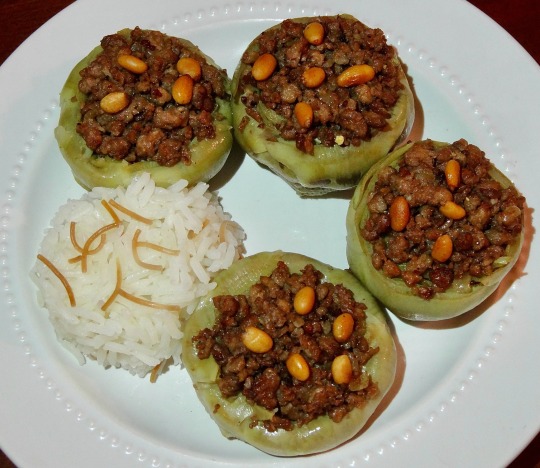
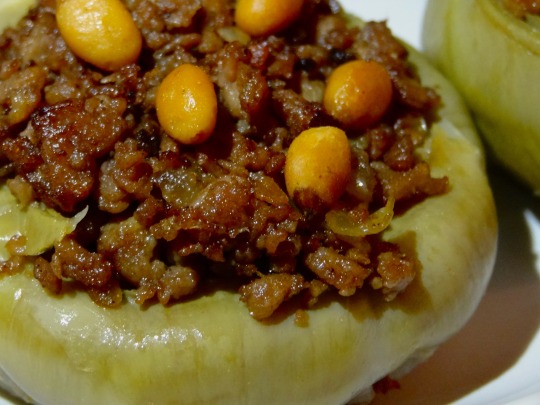
[ID: The first image is of four stuffed artichoke hearts on a plate with a mound of rice and fried vermicelli; the second is a close-up on one artichoke, showing fried ground 'beef' and golden pine nuts. End ID]
أرضي شوكي باللحم / Ardiyy-shawkiyy b-al-lahm (Stuffed artichoke hearts)
Artichoke hearts stuffed with spiced meat make a common dish throughout West Asia and North Africa, with variations on the recipe eaten in Lebanon, Syria, Palestine, Algeria, and Morocco. In Palestine, the dish is usually served on special occasions, either as an appetizer, or as a main course alongside rice. The artichokes are sometimes paired with cored potatoes, which are stuffed and cooked in the same manner. Stuffed artichokes do not appear in Medieval Arab cookbooks (though artichokes do), but the dish's distribution indicates that its origin may be Ottoman-era, as many other maḥshis (stuffed dishes) are.
The creation of this dish is easy enough once the artichoke hearts have been excavated (or, as the case may be, purchased frozen and thawed): they are briefly deep-fried, stuffed with ground meat and perhaps pine nuts, then stewed in water, or water and tomato purée, or stock, until incredibly tender.
While simple, the dish is flavorful and well-rounded. A squeeze of lemon complements the bright, subtle earthiness of the artichoke and cuts through the richness of the meat; the fried pine nuts provide a play of textures, and pick up on the slight nutty taste that artichokes are known for.
Terminology and etymology
Artichokes prepared in this way may be called "ardiyy-shawkiyy b-al-lahm." "Ardiyy-shawkiyy" of course means "artichoke"; "ب" ("b") means "with"; "ال" ("al") is the determiner "the"; and "لَحْم" ("laḥm") is "meat" (via a process of semantic narrowing from Proto-Semitic *laḥm, "food"). Other Palestinian Arabic names for the same dish include "أرضي شوكي محشي" ("ardiyy-shawkiyy maḥshi," "stuffed artichokes"), and "أرضي شوكي على ادامه" ("ardiyy-shawkiyy 'ala adama," "artichokes cooked in their own juice").
The etymology of the Levantine dialectical phrase meaning "artichoke" is interestingly circular. The English "artichoke" is itself ultimately from Arabic "الخُرْشُوف" ("al-khurshūf"); it was borrowed into Spanish (as "alcarchofa") during the Islamic conquest of the Iberian peninsula, and thence into English via the northern Italian "articiocco." The English form was probably influenced by the word "choke" via a process of phono-semantic matching—a type of borrowing wherein native words are found that sound similar to the foreign word ("phonetics"), and communicate qualities associated with the object ("semantics").
"Artichoke" then returned to Levantine Arabic, undergoing another process of phono-semantic matching to become "ardiyy-shawkiyy": أَرْضِيّ ("ʔarḍiyy") "earthly," from أَرْض ("ʔarḍ"), "Earth, land"; and شَوْكِيّ ("shawkiyy") "prickly," from شَوْك ("shawk"), "thorn."
Artichokes in Palestine
Artichoke is considered to be very healthful by Palestinian cooks, and it is recommended to also consume the water it is boiled in (which becomes delightfully savory and earthy, suitable as a broth for soup). In addition to being stuffed, the hearts may be chopped and cooked with meat or potatoes into a rich soup. These soups are enjoyed especially during Ramadan, when hot soup is popular regardless of the season—but the best season for artichokes in the Levant is definitively spring. Stuffed artichokes are thus often served by Jewish people in North Africa and West Asia during Passover.
Artichokes grow wild in Palestine, sometimes in fields adjacent to cultivated crops such as cereals and olives. Swiss traveler Johann Ludwig Burckhardt, writing in 1822, referred to the abundant wild artichoke plants (presumably Cynara syriaca) near لُوبْيا ("lūbyā"), a large village of stone buildings on a hilly landscape just west of طبريا ("ṭabariyya," Tiberias):
About half an hour to the N. E. [of Kefer Sebt (كفر سبط)] is the spring Ain Dhamy (عين ظامي), in a deep valley, from hence a wide plain extends to the foot of Djebel Tor; in crossing it, we saw on our right, about three quarters of an hour from the road, the village Louby (لوبي), and a little further on, the village Shedjare (شجره). The plain was covered with the wild artichoke, called khob (خُب); it bears a thorny violet coloured flower, in the shape of an artichoke, upon a stem five feet in height.
(Despite resistance from local militia and the Arab Liberation Army, Zionist military groups ethnically cleansed Lubya of its nearly 3,000 Palestinian Arab inhabitants in July of 1948, before reducing its buildings and wells to rubble, The Jewish National Fund later planted the Lavi pine forest over the ruins.)
Artichokes are also cultivated and marketed. Elihu Grant, nearly a century after Burckhardt's writing, noted that Palestinian villages with sufficient irrigation "[went] into gardening extensively," and marketed their goods in crop-poor villages or in city markets:
Squash, pumpkin, cabbage, cauliflower, lettuce, turnip, beet, parsnip, bean, pea, chick-pea, onion, garlic, leek, radish, mallow and eggplant are common varieties [of vegetable]. The buds of the artichoke when boiled make a delicious dish. Potatoes are getting to be quite common now. Most of them are still imported, but probably more and more success will be met in raising a native crop.
Either wild artichokes (C. syriaca) or cardoons (C. cardunculus, later domesticated to yield modern commerical artichokes) were being harvested and eaten by Jewish Palestinians in the 1st to the 3rd centuries AD (the Meshnaic Hebrew is "עַכָּבִיּוֹת", sg. "עַכָּבִית", "'aqubit"; related to the Arabic "عَكُوب" "'akūb," which refers to a different plant). The Tosefta Shebiit discusses how farmers should treat the sprouting of artichokes ("קינרסי," "qinrasi") during the shmita year (when fields are allowed to lie fallow), indicating that Jews were also cultivating artichokes at this time.
Though artichokes were persistently associated with wealth and the feast table (perhaps, Susan Weingarten speculates, because of the time they took to prepare), trimming cardoons and artichokes during festivals, when other work was prohibited, was within the reach of common Jewish people. Those in the "upper echelons of Palestinian Jewish society," on the other hand, had access to artichokes year-round, including (through expensive marvels of preservation and transport) when they were out of season.
Jewish life and cuisine
Claudia Roden writes that stuffed artichoke, which she refers to as "Kharshouf Mahshi" (خرشوف محشي), is "famous as one of the grand old Jerusalem dishes" among Palestinian Jews. According to her, the stuffed artichokes used to be dipped in egg and then bread crumbs and deep-fried. This breading and frying is still referenced, though eschewed, in modern Sephardi recipes.
Prior to the beginning of the first Aliyah (עלייה, wave of immigration) in 1881, an estimated 3% of the overall population of Palestine, or 15,011 people, were Jewish. This Jewish presence was not the result of political Zionist settler-colonialism of the kind facilitated by Britain and Zionist organizations; rather, it consisted of ancestrally Palestinian Jewish groups, and of refugees and religious immigrants who had been naturalized over the preceding decades or centuries.
One such Jewish community were the Arabic-speaking Jews whom the Sephardim later came to call "מוּסְתערבים" or "مستعربين" ("Musta'ravim" or "Musta'ribīn"; from the Arabic "مُسْتَعْرِب" "musta'rib," "Arabized"), because they seemed indifferentiable from their Muslim neighbors. A small number of them were descendants of Jews from Galilee, which had had a significant Jewish population in the mid-1st century BC; others were "מגרבים" ("Maghrebim"), or "مغربية" ("Mughariba"): descendents of Jews from Northwest Africa.
Another major Jewish community in pre-mandate Palestine were Ladino-speaking descendents of Sephardi Jews, who had migrated to Palestine in the decades following their expulsion from Spain and then Portugal in the late 15th century. Though initially seen as foreign by the 'indigenous' Mista'avim, this community became dominant in terms of population and political influence, coming to define themselves as Ottoman subjects and as the representatives of Jews in Palestine.
A third, Yiddish- and German-speaking, Askenazi Jewish population also existed in Palestine, the result of immigration over the preceding centuries (including a large wave in 1700).
These various groups of Jewish Palestinians lived as neighbors in urban centers, differentiating themselves from each other partly by the language they spoke and partly by their dress (though Sephardim and Ashkenazim quickly learned Arabic, and many Askenazim and Muslims learned Ladino). Ashkenazi women also learned from Sephardim how to prepare their dishes. These groups' interfamiliarity with each other's cuisine is further evidenced by the fact that Arabic words for Palestinian dishes entered Ladino and Yiddish (e.g. "كُفْتَة" / "kufta," rissole; "مَزَّة" "mazza," appetizer); and words entered Arabic from Ladino (e.g. "דונסי" "donsi," sweet jams and fruit leather; "בוריק" "burek," meat and cheese pastries; "המים" "hamim," from "haminados," braised eggs) and Yiddish (e.g. "לעקעך" "lakach," honey cake).
In addition to these 'native' Jews were another two waves of Ashkenazi migration in the late 18th and early-to-mid 19th centuries (sometimes called the "היישוב הישן," "ha-yishuv ha-yashan," "old settlement," though the term is often used more broadly); and throughout the previous centuries there had also been a steady trickle of religious immigration, including elderly immigrants who wished to die in Jerusalem in order to be present at the appointed place on the day of Resurrection. Recent elderly women immigrants unable to receive help from charitable institutions would rely on the community for support, in exchange helping the young married women of the neighborhood with childcare and with the shaping of pastries ("מיני מאפה").
In the first few centuries AD, the Jewish population of Palestine were largely farmers and agricultural workers in rural areas. By the 16th century, however, most of the Jewish population resided in the Jewish Holy Cities of Jerusalem (القُدس / al-quds), Hebron (الخليل / al-khalil), Safed (صفد), and Tiberias (طبريا / ṭabariyya). In the 19th century, the Jewish population lived entirely in these four cities and in expanding urban centers Jaffa and Haifa, alongside Muslims and Christians. Jerusalem in particular was majority Jewish by 1880.
In the 19th century, Jewish women in Jerusalem, like their Christian and Muslim neighbors, used communal ovens to bake the bread, cakes, matzah, cholent, and challah which they prepared at home. One woman recalls that bread would be sent to the baker on Mondays and Thursdays—but bribes could be offered in exchange for fresh bread on Shabbat. Charges would be by the item, or else a fixed monthly payment.
Trips to the ovens became social events, as women of various ages—while watching the bakers, who might not put a dish in or take it out in time—sent up a "clatter" of talking. During religious feast days, with women busy in the kitchen, some families might send young boys in their stead.
Markets and bakeries in Jerusalem sold bread of different 'grades' based on the proportion of white and wheat flour they contained; as well as flatbread (خبز مفرود / חובז מפרוד / khobbiz mafroud), Moroccan מאווי' / ماوي / meloui, and semolina breads (כומאש / كماج / kmaj) which Maghrebim especially purchased for the Sabbath.
On the Sabbath, those who had brick ovens in their sculleries would keep food, and water for tea and coffee, warm from the day before (since religious law prohibits performing work, including lighting fires, on Shabbat); those who did not would bring their food to the oven of a neighbor who did.
Palestinian Jewish men worked in a variety of professions: they were goldsmiths, writers, doctors, merchants, scientists, linguists, carpenters, and religious scholars. Jewish women, ignoring prohibitions, engaged in business, bringing baked goods and extra dairy to markets in Jerusalem, grinding and selling flour, spinning yarn, and making clothing (usually from materials purchased from Muslims); they were also shopkeepers and sellers of souvenirs and wine. Muslims, Jews, and Christians shared residential courtyards, pastimes, commercial enterprises, and even holidays and other religious practices.
Zionism and Jewish Palestinians
Eastern European Zionists in the 1880s and 90s were ambivalent towards existing Jewish communities in Palestine, often viewing them as overly traditional and religious, backwards-thinking, and lacking initiative. Jewish Palestinians did not seem to conform with the land-based, agricultural, and productivist ideals of political Zionist thinkers; they were integrated into the Palestinian economy (rather than seeking to create their own, segregated one); they were not working to create a Jewish ethnostate in Palestine, and seemed largely uninterested in nationalist concerns. Thus they were identified with Diaspora Jewish culture, which was seen as a remnant of exile and oppression to be eschewed, reformed, or overthrown.
These attitudes were applied especially to Sephardim and Mista'arevim, who were frequently denigrated in early Zionist literature. In 1926, Revisionist Zionist leader Vladimir Jabotinsky wrote that the "Jews, thank God, have nothing in common with the East. We must put an end to any trace of the Oriental spirit in the Jews of Palestine." The governance of Jewish communities was, indeed, changed with the advent of the British Mandate (colonial rule which allowed the British to facilitate political Zionist settling), as European political and "socialist" Zionists promoted Ashkenazi over Sephardi leadership.
Under the Ottomans, the millet system had allowed a degree of Jewish and Christian autonomy in matters of religious study and leadership, cultural and legal affairs, and the minting of currency. The religious authority of all Jewish people in Palestine had been the Sephardi Rabbi of Jerusalem, and his authority on matters of Jewish law (like the authority of the Armenian Patriarchate on matters of Christian law) extended outside of Palestine.
But British and European funding allowed newer waves of Ashkenazi settlers (sometimes called "היישוב החדש," "ha-yishuv ha-khadash," "new settlement")—who, at least if they were to live out the ideals of their sponsors, were more secular and nationalist-minded than the prior waves of Ashkenazi immigration—to be de facto independent of Sephardi governance. Several factors lead to the drying up of halaka (donated funds intended to be used for communal works and the support of the poor in Sephardi communities), which harmed Sephardim economically.
Zionist ideas continued to dominate newly formed committees and programs, and Palestinian and Sephardi Jews reported experiences of racial discrimination, including job discrimination, leading to widespread poverty. The "Hebrew labor" movement, which promoted a boycott of Palestinian labor and produce, in fact marginalized all workers racialized as Arab, and promises of work in Jewish labor unions were divided in favor of Ashkenazim to the detriment of Sephardim and Mizrahim. This economic marginalization coincided with the "social elimination of shared indigenous [Palestinian] life" in the Zionist approach to indigenous Jews and Muslims.
Despite the adversarial, disdainful, and sometimes abusive relationship which the European Zionist movement had with "Oriental" Jews, their presence is frequently used in Zionist food and travel writing to present Israel as a multicultural and pluralist state. Dishes such as stuffed artichokes are claimed as "Israeli"—though they were eaten by Jews in Palestine prior to the existence of the modern state of Israel, and though Sephardi and Mizrahi diets were once the target of a civilizing, correcting mission by Zionist nutritionists. The deep-frying that stuffed artichokes call for brings to mind European Zionists' half-fascinated, half-disgusted attitudes towards falafel. The point is not to claim a dish for any one national or ethnic group—which is, more often than not, an exercise in futility and even absurdity—but to pay attention to how the rhetoric of food writing can obscure political realities and promote the colonizer's version of history. The sinking of Jewish Palestinian life prior to the advent of modern political Zionism, and the corresponding insistence that it was Israel that brought "Jewish cuisine" to Palestine, allow for such false dichotomies as "Jewish-Palestinian relations" or "Jewish-Arab relations"; these descriptors further Zionist rhetoric by making a clear situation of ethnic cleansing and settler-colonialism sound like a complex and delicate issue of inter-ethnic conflict. To boot, the presentation of these communities as having merely paved the way to Zionist nationalism ignores their existence as groups with their own political, social, and cultural lives and histories.
Help evacuate a Gazan family with Operation Olive Branch
Buy an eSim for use in Gaza
Help Anera provide food in Gaza
Ingredients:
Serves 4 (as a main dish).
For the artichokes:
6 fresh, very large artichokes; or frozen (not canned) whole artichoke hearts
1 lemon, quartered (if using fresh artichokes)
250g (1 1/2 cups) vegetarian ground beef substitute; or 3/4 cup TVP hydrated with 3/4 cup vegetarian 'beef' stock from concentrate
1 yellow onion, minced
Scant 1/2 tsp kosher salt
1/2 tsp ground black pepper
1 pinch ground cardamom (optional)
1/4 tsp ground allspice or seb'a baharat (optional)
1 Tbsp pine nuts (optional)
Water, to simmer
Oil, to fry
2 tsp vegetarian 'beef' stock concentrate, to simmer (optional)
Lemon, to serve
Larger artichokes are best, to yield hearts 3-4 inches in width once all leaves are removed. If you only have access to smaller artichokes, you may need to use 10-12 to use up all the filling; you might also consider leaving some of the edible internal leaves on.
The meat may be spiced to taste. Sometimes only salt and black pepper are used; some Palestinian cooks prefer to include seb'a baharat, white pepper, allspice, nutmeg, cardamom, and/or cinnamon.
Medieval Arab cookbooks sometimes call for vegetables to be deep-fried in olive oil (see Fiḍālat al-Khiwān fī Ṭayyibāt al-Ṭaʿām wa-l-Alwān, chapter 6, recipe no. 373, which instructs the reader to treat artichoke hearts this way). You may use olive oil, or a neutral oil such as canola or sunflower (as is more commonly done in Palestine today).
Elihu Grant noted in 1921 that lemon juice was often served with stuffed vegetable dishes; today stuffed artichokes are sometimes served with lemon.
For the rice:
200g Egyptian rice (or substitute any medium-grained white rice)
2 tsp broken semolina vermicelli (شعيريه) (optional)
1 tsp olive oil (optional)
Large pinch salt
520g water, or as needed
Broken semolina vermicelli (not rice vermicelli!) can be found in plastic bags at halal grocery stores.
Instructions:
For the stuffed artichokes:
1. Prepare the artichoke hearts. Cut off about 2/3 of the top of the artichoke (I find that leaving at least some of the stem on for now makes it easier to hollow out the base of the artichoke heart without puncturing it).
2. Pull or cut away the tough outer bracts ("leaves") of the artichoke until you get to the tender inner leaves, which will appear light yellow all the way through. As you work, rub a lemon quarter over the sides of the artichoke to prevent browning.
3. If you see a sharp indentation an inch or so above the base of the artichoke, use kitchen shears or a sharp knife to trim off the leaves above it and form the desired bowl shape. Set aside trimmings for a soup or stew.
4. Use a small spoon to remove the purple leaves and fibers from the center of the artichoke. Make sure to scrape the spoon all along the bottom and sides of the artichoke and get all of the fibrous material out.
5. Use a paring knife to remove any remaining tough bases of removed bracts and smooth out the base of the artichoke heart. Cut off the entire stem, so that the heart can sit flat, like a bowl.
6. Place the prepared artichoke heart in a large bowl of water with some lemon juice squeezed into it. Repeat with each artichoke.
7. Drain artichoke hearts and pat dry. Heat a few inches of oil in a pot or wok on medium and fry artichoke hearts, turning over occasionally, for a couple minutes until lightly browned. If you don't want to deep-fry, you can pan-fry in 1 cm or so of oil, flipping once. Remove with a slotted spoon and drain.
8. Prepare the filling. Heat 1 tsp of olive oil in a large skillet on medium-high and fry onions, agitating often, until translucent.
Tip: Some people add the pine nuts and brown them at this point, to save a step later. If you do this, they will of course be mixed throughout the filling rather than being a garnish on top.
9. Add spices, salt, and meat substitute and fry, stirring occasionally, until meat is browned. (If using TVP, brown it by allowing it to sit in a single layer undisturbed for 3-4 minutes, then stir and repeat.) Taste and adjust spices and salt.
10. Heat 1 Tbsp of olive oil or margarine in a small pan on medium-low. Add pine nuts and fry, stirring constantly, until they are a light golden brown, then remove with a slotted spoon. Note that, once they start taking on color, they will brown very quickly and must be carefully watched. They will continue to darken after they are removed from the oil, so remove them when they are a shade lighter than desired.
11. Stuff the artichoke hearts. Fill the bowl of each heart with meat filling, pressing into the bottom and sides to fill completely. Top with fried pine nuts.
12. Cook the artichoke hearts. Place the stuffed artichoke hearts in a single layer at the bottom of a large stock pot, along with any extra filling (or save extra filling to stuff peppers, eggplant, zucchini, or grape leaves).
13. Whisk stock concentrate into several cups of just-boiled water, if using—if not, whisk in about a half teaspoon of salt. Pour hot salted water or stock into the pot to cover just the bottoms of the stuffed artichokes.
14. Simmer, covered, for 15-20 minutes, until the artichokes are tender. Simmer uncovered for another 5-10 minutes to thicken the sauce.
For the rice:
1. Rinse your rice once by placing it in a sieve, putting the sieve in a closely fitting bowl, then filling the bowl with water; rub the rice between your fingers to wash, and remove the sieve from the bowl to strain.
2. Place a bowl on a kitchen scale and tare. Add the rice, then add water until the total weight is 520g. (This will account for the amount of water stuck to the rice from rinsing.)
3. (Optional.) In a small pot with a close-fitting lid, heat 1 tsp olive oil. Add broken vermicelli and fry, agitating often, until golden brown.
4. Add the rice and water to the pot and stir. Increase heat to high and allow water to come to a boil. Cover the pot and lower heat to a simmer. Cook the rice for 15 minutes. Remove from heat and steam for 10 minutes.
To serve:
1. Plate artichoke hearts on a serving plate alongside rice and lemon wedges; or, place artichoke hearts in a shallow serving dish, pour some of their cooking water in the base of the dish, and serve rice on a separate plate.

Tip: The white flesh at the base of the bracts (or "leaves") that you removed from the artichokes for this recipe is also edible. Try simmering removed leaves in water, salt, and a squeeze of lemon for 15 minutes, then scraping the bract between your teeth to eat the flesh.
209 notes
·
View notes
Text

Ashkenazi-Style Charoset
#food#recipe#dessert#charoset#apple#orange#walnut#almond#cinnamon#honey#wine#relish#vegetarian#gluten free#dairy free#passover
40 notes
·
View notes
Text

Vegan Potato Latkes Recipe
#Jewish#Hanukkah#savoury#lunch#appetizer#latkes#potato#potatoes#Passover#matzo#kosher#soy free#nut free#recipe#recipes#vegan#veganism#vegetarian#vegetarian food#vegetarian recipe#vegetarian recipes#meat free#jewblr#cooking#chef#vegetarians#photography#egg free#peta#home cooking
39 notes
·
View notes
Text
i love u almond flour
#needed a passover-friendly cake tonight and the bag of almond flour that's been languishing in our pantry really delivered#i did have to separate seven eggs but apart from that it's a surprisingly easy recipe#definitely going in the rotation
46 notes
·
View notes
Text
happy passover! i’m seeing the stuff on my dash die down a bit so i figured i’d drop this list of passover-friendly meals, whether youre jewish and starving without your typical meals or you’re not but you’re sharing a meal with a jewish friend and want to make something you’re sure you can eat, or if you just want some new recipes.
#i love cooking and my friend was like “all we’re having this week is flat bread and nutella” so. figured someone else was havingthis problem#anyway if you’re jewish and there’s any meals you love please add on with your own recipe! im not so im just trying my best lol#our queer experience#passover#judaism#is it ok to tag jumblr as a goy? i wont just because but idk
120 notes
·
View notes
Text
Okay, Jumblr!
I want to put together a family haggadah, made up of my favorite stories, ways of explaining things, discussion questions, games, whatever.
Every year, I end up not having time, and falling back on the Ten-Minute, Fifteen-Minute, or Thirty-Minute haggadot. Or, the first year with an infant, the Five-Minute Seder.
While your own seders are still fresh in your minds, can you please reblog with your favorite bits you think I should include?
(and while I'm looking at my folder of haggadot, here are the ones I've collected, but never tried or even read all the way through:
PJ Library's 15-Minute Haggadah
Sha'ar Zahav's LGBT Haggadah
The Chocolate Haggadah
And a bonus I just found: I used to make weekly mini cookbooks with grocery lists. I made this one a solid five years before I realized I should convert to Judaism. But I firmly believed that Jewish inclusion was an important part of diversity. So in 2012, I made this mini cookbook of Sephardic Passover recipes.)
30 notes
·
View notes
Text
Homemade Chicken Soup with Not-So-Homemade Matzo Balls
I always make my own chicken soup. It is delicious broth. I usually make a few batches and freeze them because it’s a great thing to have frozen in quart containers as stock and will last for up to six months frozen. When the holidays come—whether Rosh Hashanah or Passover—I always make my chicken soup with matzo balls. I make the soup a day ahead and skim whatever fat is on there before adding…
#chickensoup#colorado#dinner#family-recipes#food#Holiday Recipes#Homemade Chicken Soup#Homemade chicken soup with or without Matzo Balls#jewishcooking#jewishfood#Matzo Balls#matzohballs#Passover Recipes#passoverrecipes#recipe#recipes#soup
0 notes
Text
Hey Jews in my phone! I made this cake with a couple minor substitutions to make it more Ashkenazi-Passover-friendly (potato starch instead of cornstarch, etc), and if you have time and/or a stand mixer I would highly recommend it.
17 notes
·
View notes
Text
You can use any filling you like but here is mine:
Stab and then microwave a few Yukon gold potatoes until soft. Cool them until you can safely handle them.
Peel if you like at this stage. Or don't.
Mash them with about equal amount of ricotta cheese to the amount of potato you have, add a splash of balsamic vinegar or a spoonfulof sourcream or buttermilk (something tangy), then add onion powder, salt and pepper to taste BUT make them taste a bit stronger than you would eat if you were just eating a bowl of plain mashed. Mix in a big handful of shredded cheddar (or similar melty cheese).
You can add wet things like milk or cream if you like, but the idea is to keep the mixture dry enough to hold together in little football shape, so do not go too wet.
Passover Pierogies, my mutuals.
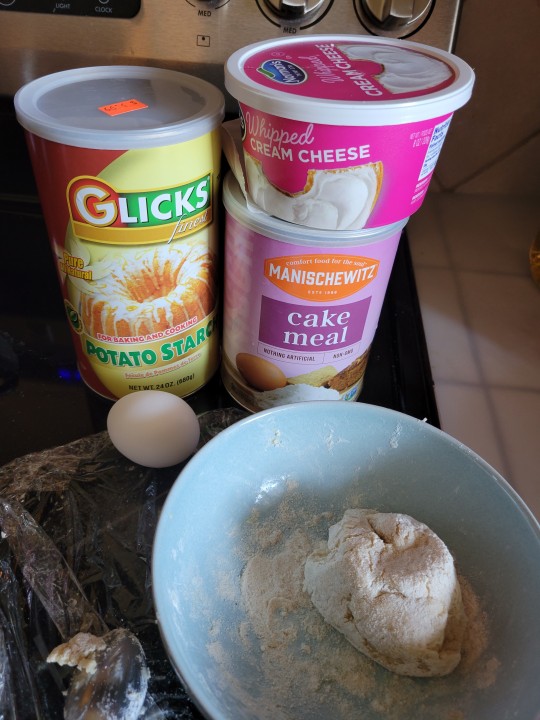
3 parts cake meal to 1 part potato starch, mix in enough cream cheese to make a crumbly paste, stir in 1 beaten egg and then knead. Add a drizzle of water if needed to make a smooth soft dough. Knead smooth.
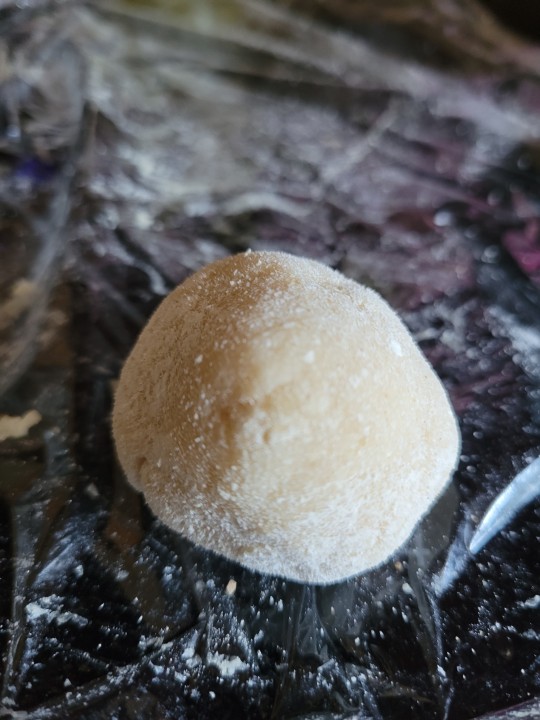
Break off a walnut sized ball, roll smooth, dust with cake meal mash flat between two pieces of plastic wrap.
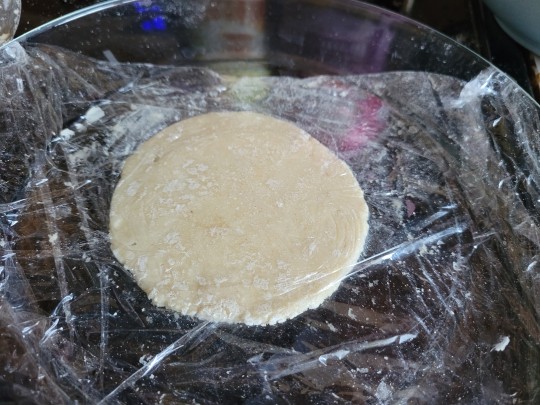
Add an oblong of well seasoned mashed potatoes
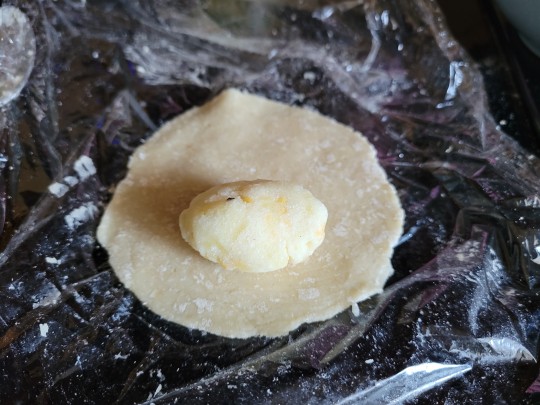
fold over and crimp to seal

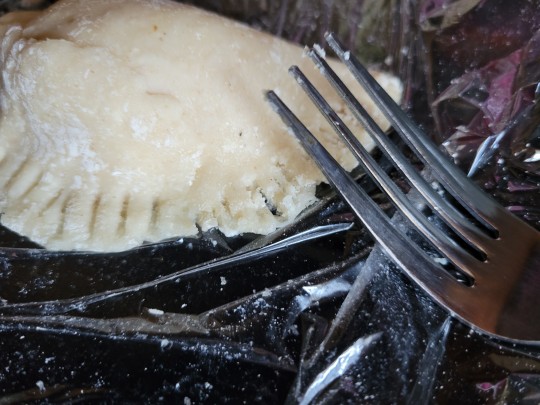
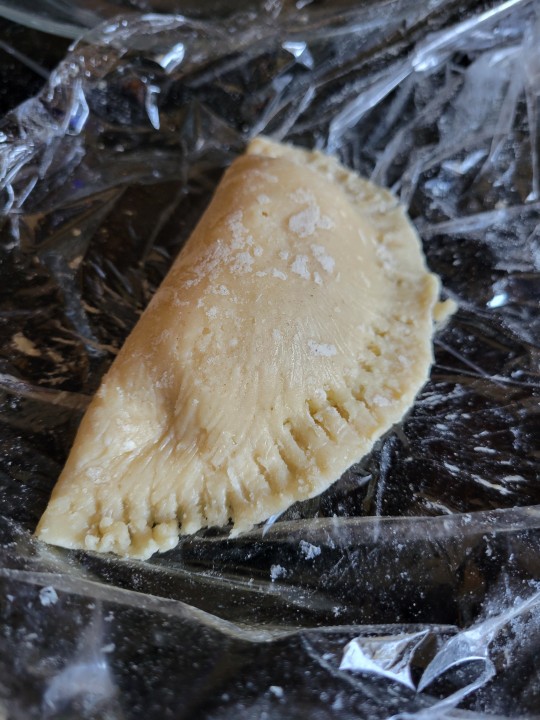
Simmer very gently, 3 minutes, with lid on so steam is trapped. Stir gently to make sure they aren't stuck to the pot . don't crowd the pot. When they float, they are done.
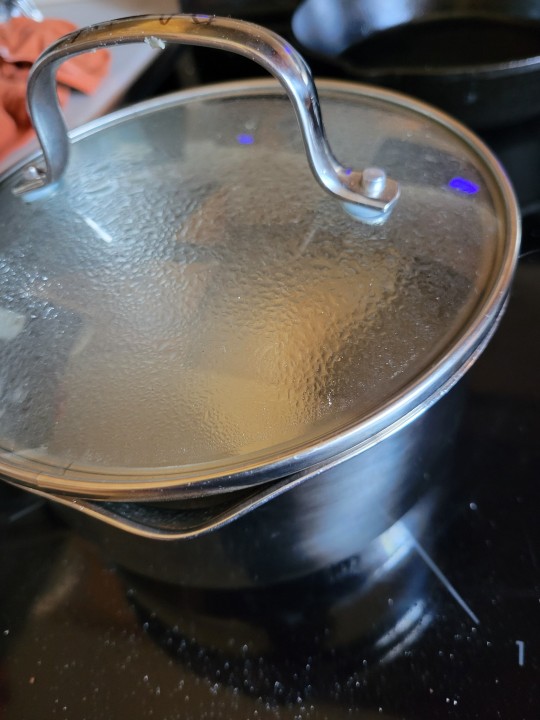


You are welcome.
#passover pirogies#passover knish#passover recipes#passover#pesach#kosher for passover#kosher for pesach#potato knish#pirogies
17 notes
·
View notes
Text
Passover Memories & Martha's best guest, the beloved Joan Rivers
Over a decade ago Martha spoke about her friendship with Joan Rivers. Joan was Martha's BEST guest and she made regular appearances during Passover.
youtube
Passover Recipes: Matzo Latkes
I might actually try this...
youtube
Oscar themed recipes: The Queen
Bacon Wrapped Dates with Joan Rivers⎢Martha Stewart
youtube
#joan rivers#martha stewart#the queen#helen mirren#recipies#bacon wrapped stuffed dates#passover memories#oscar themed recipes#matzo latkes
7 notes
·
View notes